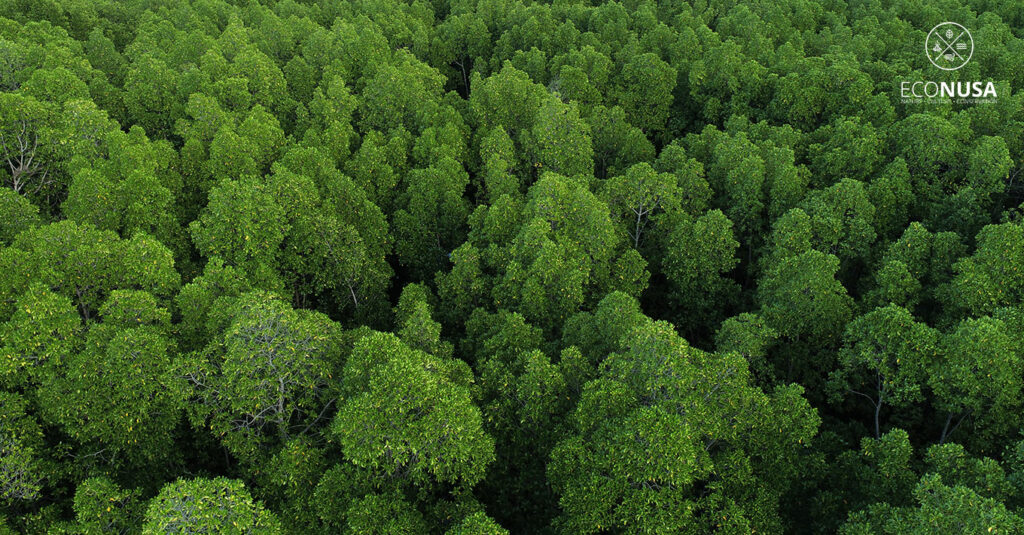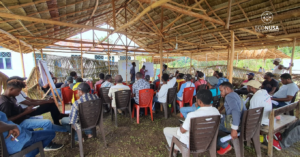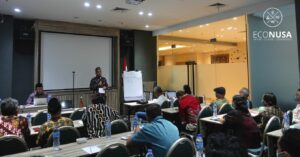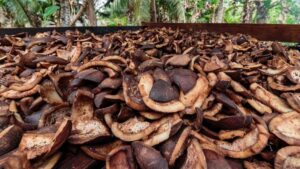
Siding with Spatial Planning (RTRW) of customary areas and indigenous peoples has significant role in a sustainable development. The provincial spatial planning with 20 years enactment will be detrimental if it only focuses on economy. Meanwhile, when the ecology is degraded, then it will affect not only the indigenous people’s life but also their culture loss.
That was the concluding remarks on the virtual discussion on “Mangrove in Tanah Papua: Who Defends It?”. The discussion was a collaboration of Terasmitra and EcoNusa Foundation. “If it sides with spatial planning, the people’s energy will not be in vain. In any place, spatial planning is the basis reference to land clearance,” said Jimmy Wanma, an academician from Papua University’s School of Forestry, on Saturday 19 February 2022.
Read also: Restoration of Youtefa Bay Mangrove Urgent
The construction of Youtefa bridge has degraded mangrove forest. Inaugurated in October 2019, the bridge connects Jayapura City and Muara Tami District. During its construction since 2015, around 1 hectare of primary mangrove forests were cleared out due to miscalculation. Unfortunately, it remains a big mistake without any replanting process.
Mangrove forest surrounding Youtefa Bay is also called Women Forest. The designation here refers to the customary law that only allows women to get into the mangrove forests. Petronela Merauje, a noted women figure of Women Forest, said that the Women Forest has served as the source of life to the community of Enggros Village.
The Women Forest is the spot for unclothed local women in search of oyster (locally called bia), crab, and shrimp. The women often brought their daughters with them to the chores. During the activity in the forest, there is transfer of customary values. Those women teach their daughters how to behave in line with the traditional values particularly when they deal with dispute. In addition to mangrove biota, they make use of timber from the forests as the building materials and firewood.
Read also: Women Forest, Mangrove Conservation by Enggros Women (Part I)
Regrettably, the Women Forest has now been contaminated by waste from Youtefa market. The debris is trapped amidst the mangrove roots and pollutes the water in the forest. “Instead of getting fish and oyster, my relative only got debris. It is hard to get oyster that we eat and sell for money. We can hardly look for oyster unclothed because the path is clear and visible,” said Petronela.
The commitment of Papua Provincial government with its spatial planning is necessary to help reduce the incessant pressures on the Women Forest. On the other hand, the small and medium enterprises (SMEs) are constructed along the Ciberi Beach lines without any building permit. The loss of vegetation surrounding the beach will bring about abrasion that shrink the coast line. Let alone, improper waste management will also worsen the spot.
Read also: Education and Culture Ministry to Build Customary School in Malaumkarta with EcoNusa
All community elements provide backup for the protection of Women Forest. Rumah Bakau Jayapura community, among others, regularly cleans up waste surrounding the forest here. They actively search for mangrove seeds and plant them to reduce the degradation.
“The government could just ignore the issue here. If it is gone, what will make the indigenous people and Jayapura community proud. Tradition and culture will automatically disappear when the Women Forest is not protected. It will merely become a legend to the next generation,” said Ezterlin Baransano, the member of Rumah Bakau Jayapura.
Editor: Leo Wahyudi & Nur Alfiyah







